It might seem obvious but a little guidance goes a long way on getting the best out of your gimble belt so you can get the advantage on hard-fighting fish and not hurt your back or groin. Before we start, it’s worth discussing the belt and its purpose. Often called a gimble belt, it is also frequently referred to as a fighting belt as its primary use is to provide both comfort and a mechanical advantage to the angler when locked into battle with a hard-fighting fish. Gimble belts are also sometimes used by both deep jiggers and topwater anglers when they work a lure ‘from the belt’ this can be useful when a high rod tip position is desired when working the lure.
The gimble belt comprises three parts, a gimble head that accommodates the rod butt (both rubber and metal types), a backing plate to distribute load across the top of your thighs, and a webbing belt to secure the whole assembly around your waist.
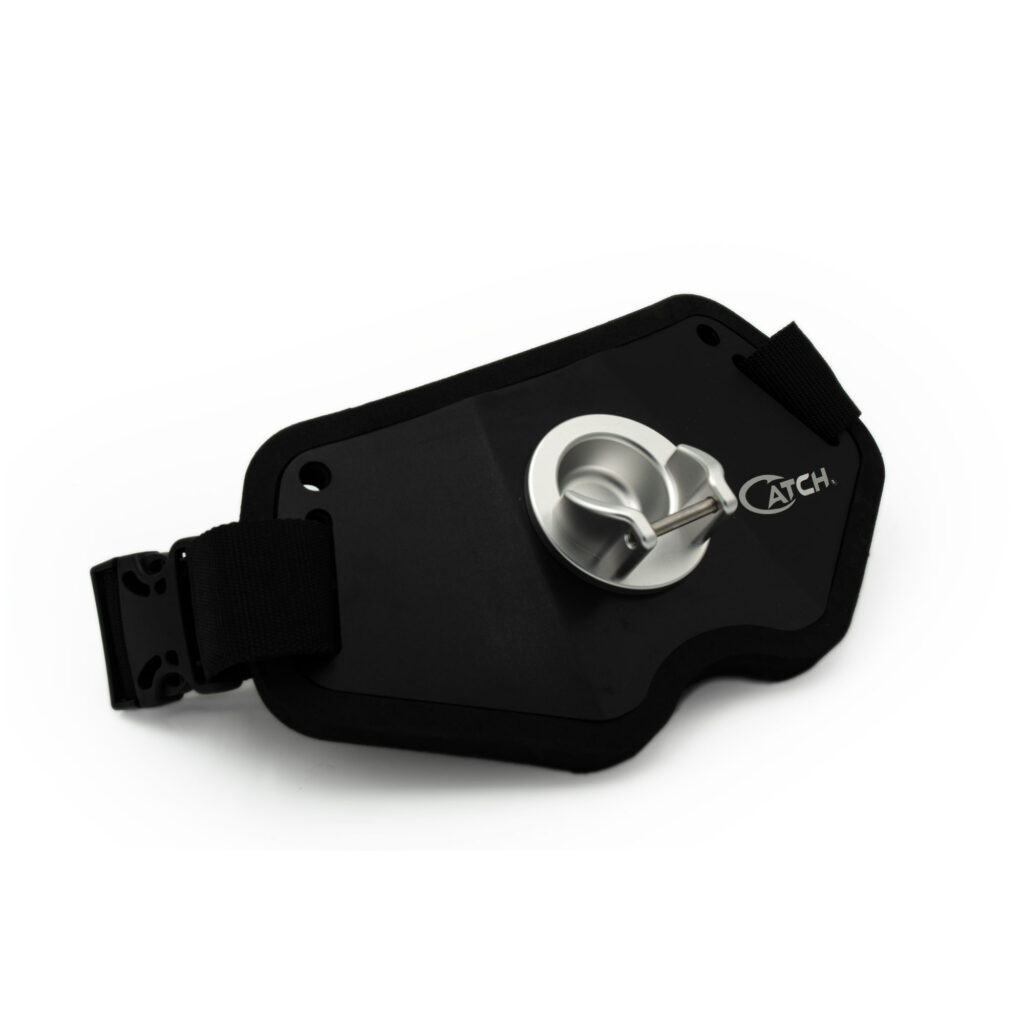
First up it’s important to adjust the belt to the correct fitment around your waist. We recommend that the belt should fit slightly loose, but not so loose that it will slip over your buttocks. You want the belt to sit low on your waist ideally below the top of your hips and the pad should be partly on the top of your thighs.
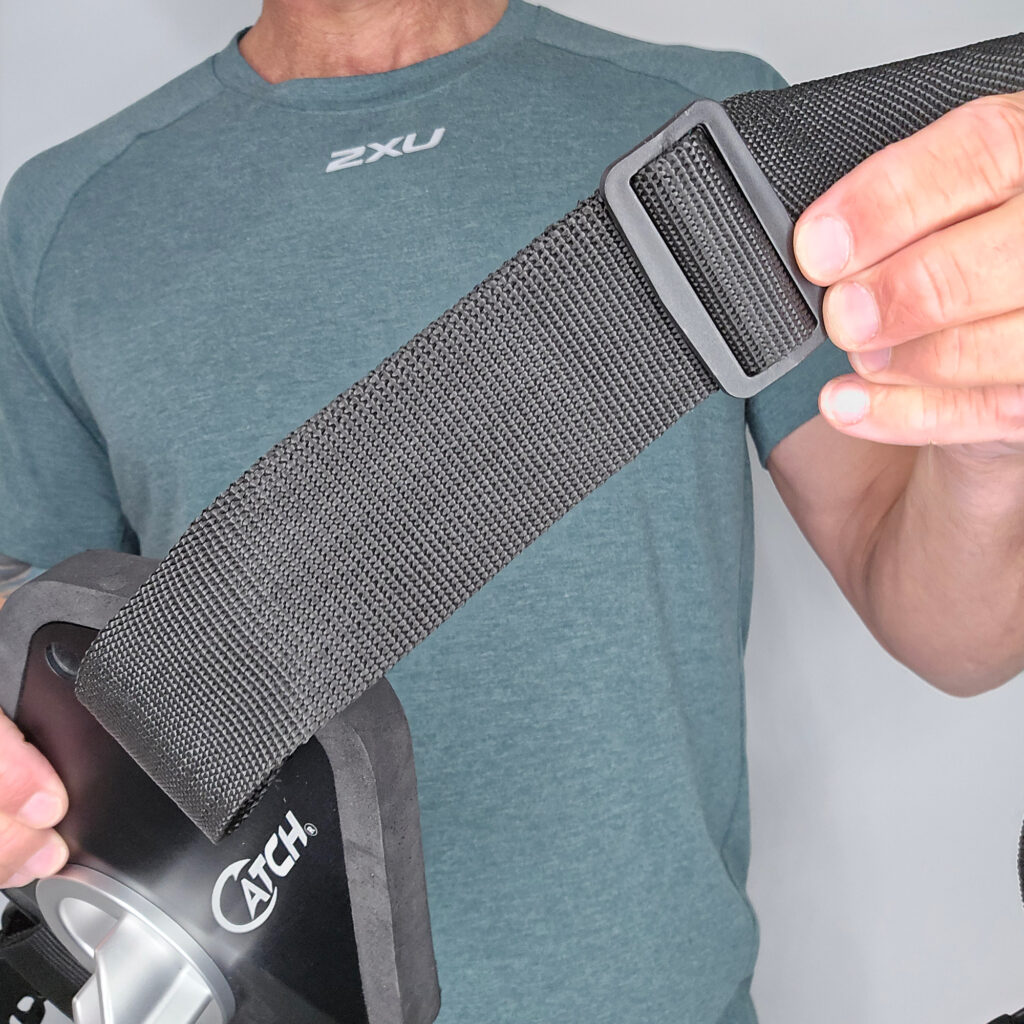
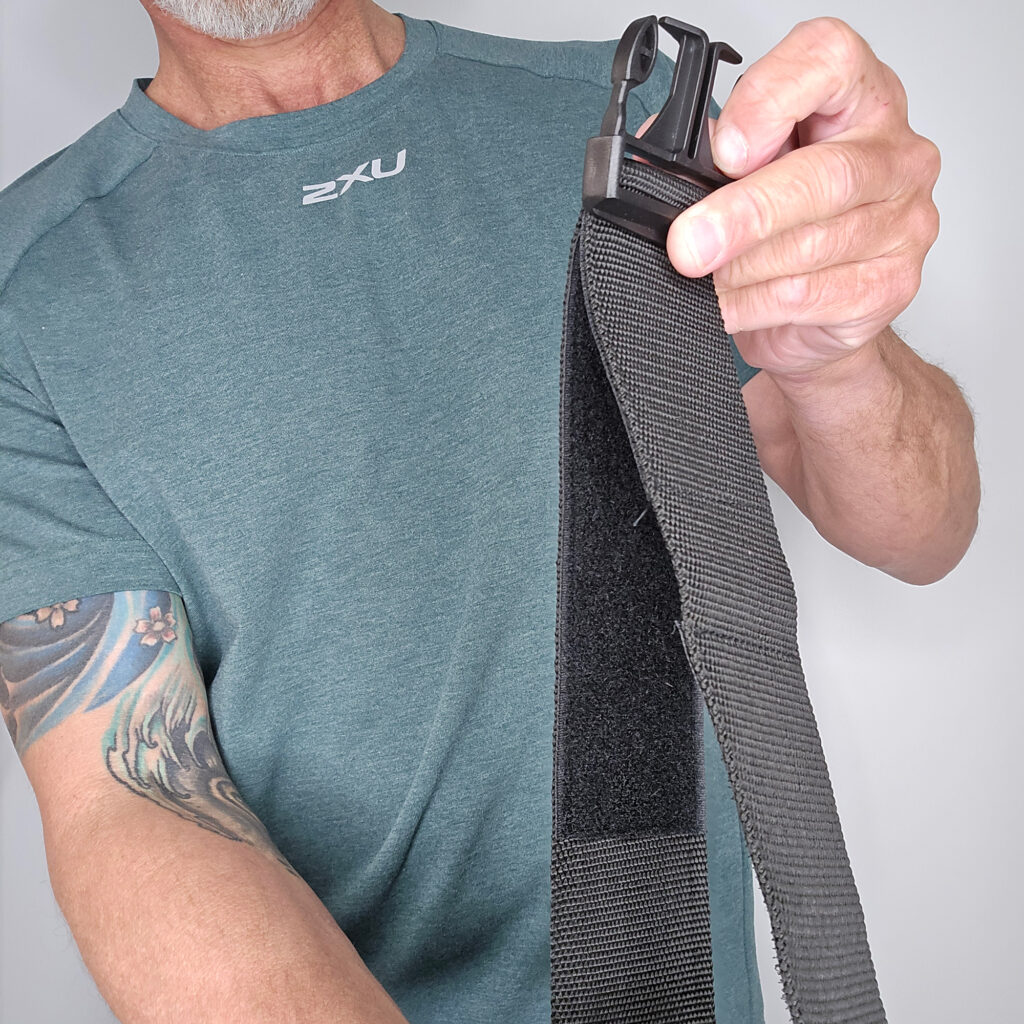
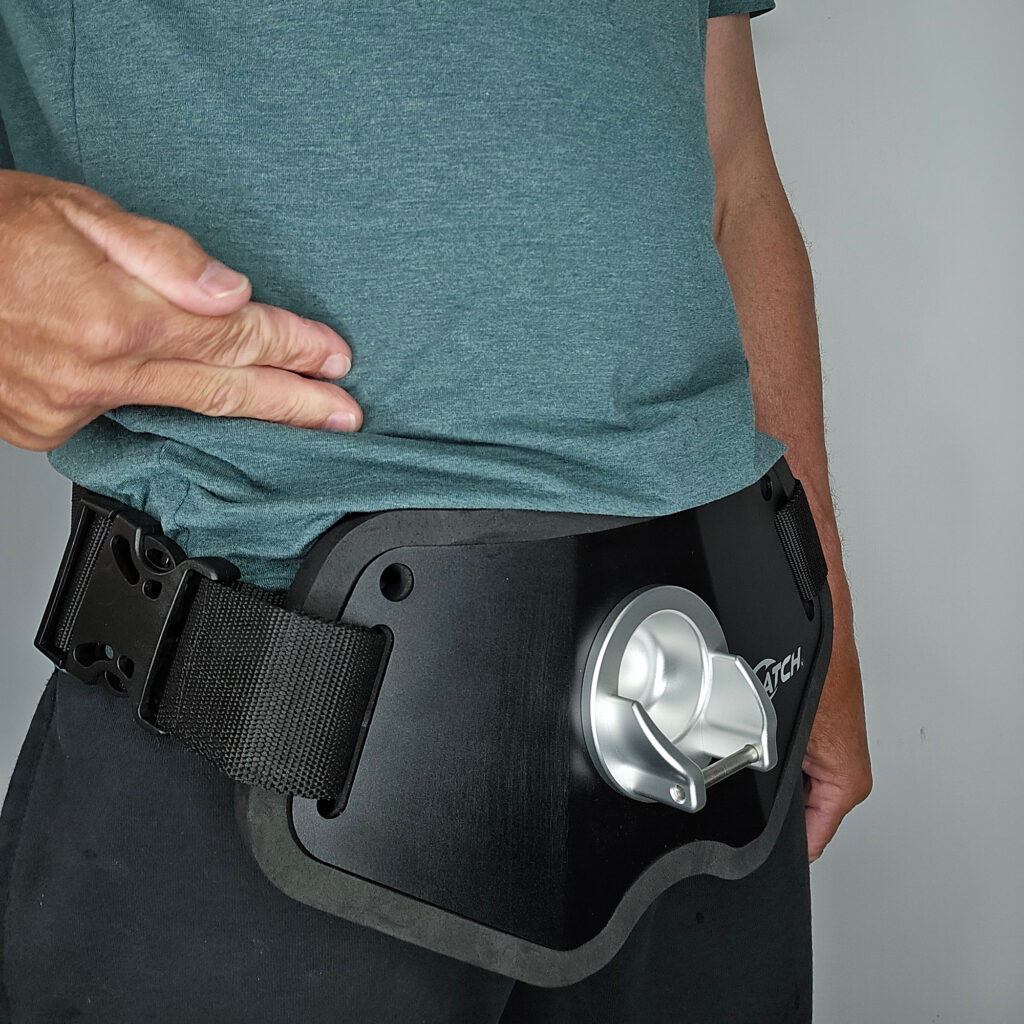
Once the correct fit has been achieved, simply secure the belt with the Fastex buckle.
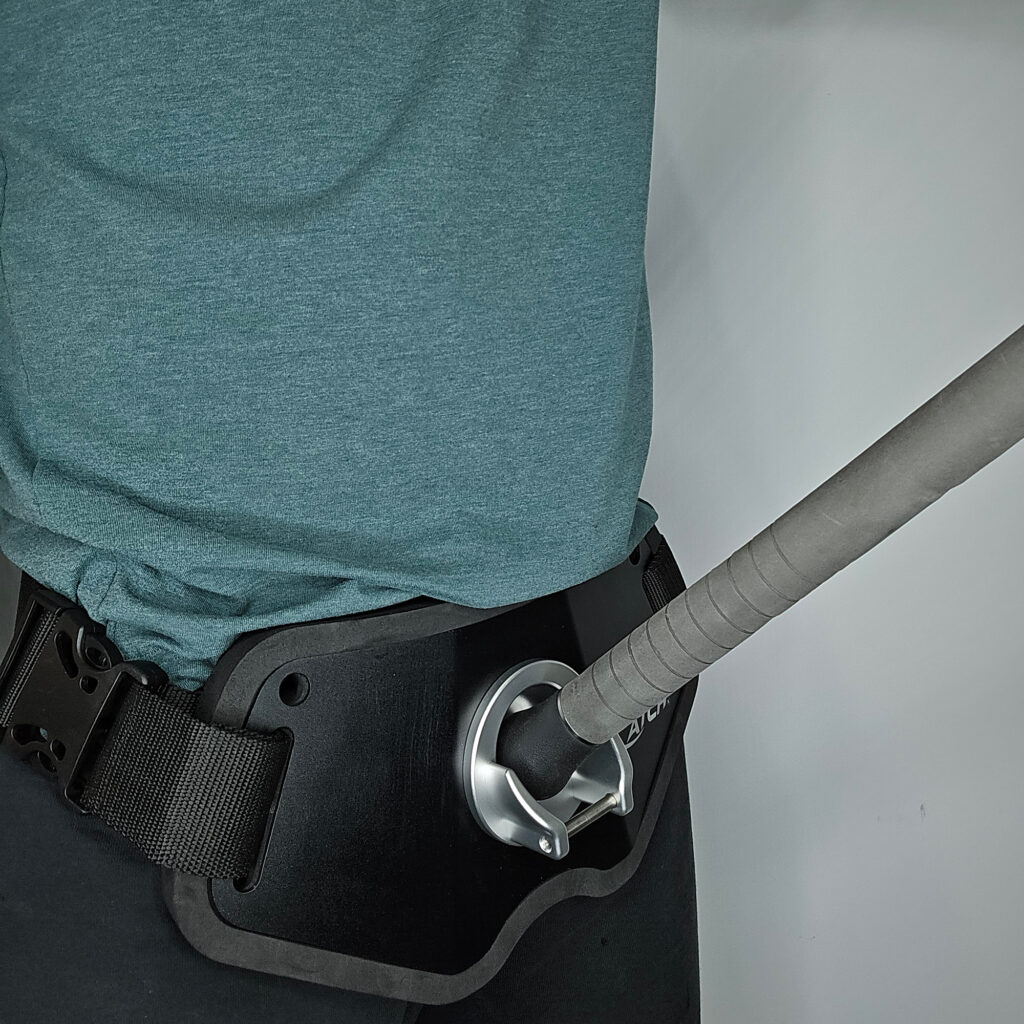
For a rubber butt cap rods, the cup section of the gimble is used. The pressure of a hard-fighting fish combined with the angler pulling back on the rod will keep it in position.
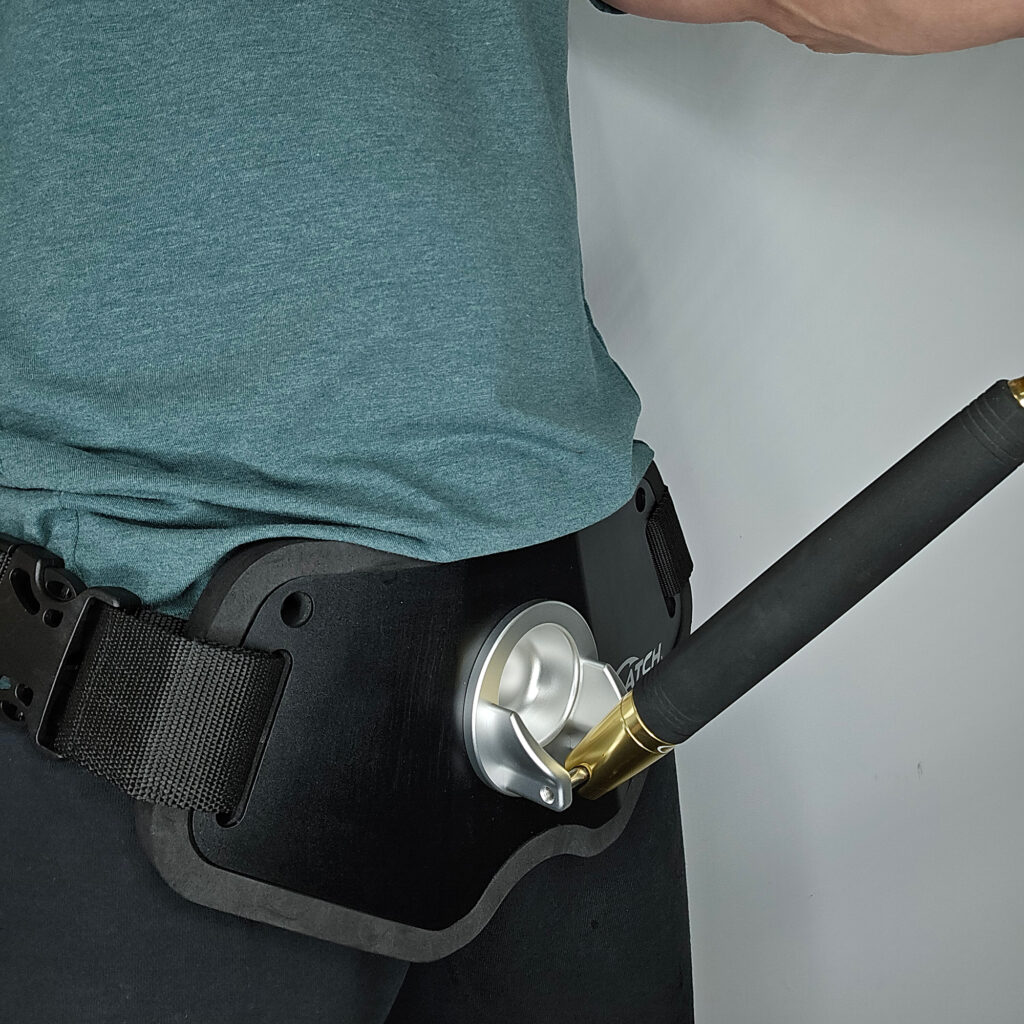
For nylon, graphite, or metal gimble rod butts, the cross bar pin is used to position and pivot the rod during the fight



